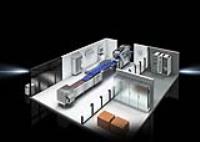 Add My Company
Add My Company
Sign In

Food processing is a sector that demands very high standards of efficiency to meet daily production throughput targets.
Any unexpected breakdown of critical components which stops production lines can have a major impact, not just in terms of loss of output, but also unplanned maintenance. One way to avoid this is to employ adequate climate control to help ensure electrical enclosures and their critical components are kept within a suitable operating environment.
Below are some key aspects to consider when reviewing your climate control solutions. More details will be available to visitors attending this year’s Drives & Controls (NEC, Birmingham NEC, 21–23 April 2020).
Is your solution right for the environment?
The type of product being processed on-site and/or the location of the equipment within the facility are likely to heavily influence your climate control solution.
1. if the ambient temperature of your facility remains lower, year-round, than the desired enclosure internal enclosure temperature then fan-and-filter units and air-to-air heat exchangers can be very effective. They use the ambient air to remove heat energy from the enclosure, releasing it back into the environment.
If the ambient temperature rises above the desired internal temperature, then units with active cooling circuits must be used. Wall/roof-mounted cooling units and air-to-water heat exchangers include a refrigerant to remove the excess heat from enclosures and maintain the desired conditions.
2. Dusty or acidic contamination (e.g. flour or yeast/vinegar extracts) can interfere with switchgear and cause short circuits or a reduction in service life.
Applying filter mats to fan and filter units will help, but if the environment is extremely contaminated you might be better off installing a cooling unit to ensure that the internal and external air-paths are exclusive thus ensuring contaminated air isn’t drawn into the enclosure.
Increasing Energy Efficiency = Reduced Costs
Many food production facilities work around the clock and with energy prices rising globally, it’s vital to get early warning of any potential issue which could impact on productivity or costs. Schedule a semi-regular performance assessment of your cooling equipment to check whether or not it’s overworked.
Unlike speed-controlled cooling devices, such as the new Rittal Blue e+ cooling units, conventional units start when the temperature inside the enclosure gets above set point (normally 35°C) and finish when the shutdown temperature of 30°C is achieved (at a typical hysteresis of 5K). If the device does not reach the shutdown temperature it will continue to operate at full output, using large amounts of energy. This is one good indicator that the unit is inadequate for the job and that too little cooling air may be getting to electrical components.
Cleaning/Maintenance Regime
Establishing a regular inspection and cleaning of cooling equipment is very good practice. For example, vacuum cleaning units with filter mats to remove any dust and debris which might choke the fan. This will mean the unit works harder for longer and also reduces its cooling capacity.
Cooling units must also be kept clean to maintain the highest standards of hygiene. Some will be cleaned daily with pressure washers and jet steam cleaners in which case use units which meet the required ingress protection rating desired for your site and purchase additional cowls or covers as needed.
For more information on Rittal Giving Expert Advice on Temperature Management in the Food Industry, at Drives & Controls 2020 talk to Rittal Ltd
Enquire Now
List your company on FindTheNeedle.

